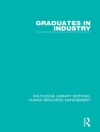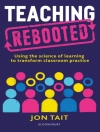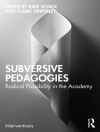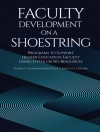This collection of original essays examines the complex historical relationships between religion, war and peace. Taking Tolstoy’s famous novel as its title, the book is divided into two sections. In the first, four chapters explore examples of religion and violence. These include a famous case of violence against Polish Jews by their neighbors, messianic movements in West Papua in response to external cultural and military threats, the American Protestant response to the violence of the Civil War and the ultimate defeat of the Confederate forces, and finally the religion and violence among Plains Indians within the framework of a sociological debate about “civilization.” The second section examines the Quaker doctrine of nonviolence and resistance to war taxes, the diverse attempts to understand the atomic bombing of Japan and the construction of a tourist industry around Hiroshima, the role of religious identity in the laws that influence sectarian tensions in Lebanon, and finally the notion of love in the countercultures of the 1960s that were inspired by Gandhi and Martin Luther King. In his introduction and conclusion, Bryan Turner, reflecting on the analysis of the futility of war in Tolstoy’s novel, looks at various explanations of the role of religion in political violence. These include the idea of a clash of civilizations, the tensions between majorities and minorities, the role of the state in promoting communal violence, and the struggle between different religious worldviews against a background of secularization.
Innehållsförteckning
Acknowledgments; Contributors; Introduction by Bryan S. Turner; WAR: Chapter 1: Sacred Memory and the Secular World: The Poland Narratives – Alisse Waterston; Chapter 2: A Messianic Multiple: West Papua, July 1998 – Eben Kirksey; Chapter 3: Lincoln, the Ministers of Religion and the American Jeremiad – Jonathan Keller; Chapter 4: Spiritual Violence: Max Weber and Norbert Elias on Religion and Civilization – Bryan S. Turner; PEACE: Chapter 5: Quakers, the Origins of the Peace Testimony and Resistance to War Taxes – Ana M. Acosta; Chapter 6: A Sacred Ground for Peace: Violence, Tourism and Sanctification in Hiroshima 1960–1970 – Ran Zwigenberg; Chapter 7: The Sectarian as a Category of Secular Power: Sectarian Tensions and Judicial Authority in Lebanon – Raja Abillama; Chapter 8: The Commodification of Love: Gandhi, King and 1960s Counterculture – Alexander Bacha and Manu Bhagavan; Chapter 9: The Religion of Brotherly Love: Leo Tolstoy and Max Weber – Bryan S. Turner; Chapter 10: Conclusion: War and Peace – Bryan S. Turner
Om författaren
Bryan S. Turner is the presidential professor of sociology and the director of the Committee on Religion at the Graduate Center, City University of New York, USA, and the director of the Centre for the Study of Religion and Society at the University of Western Sydney, Australia.












